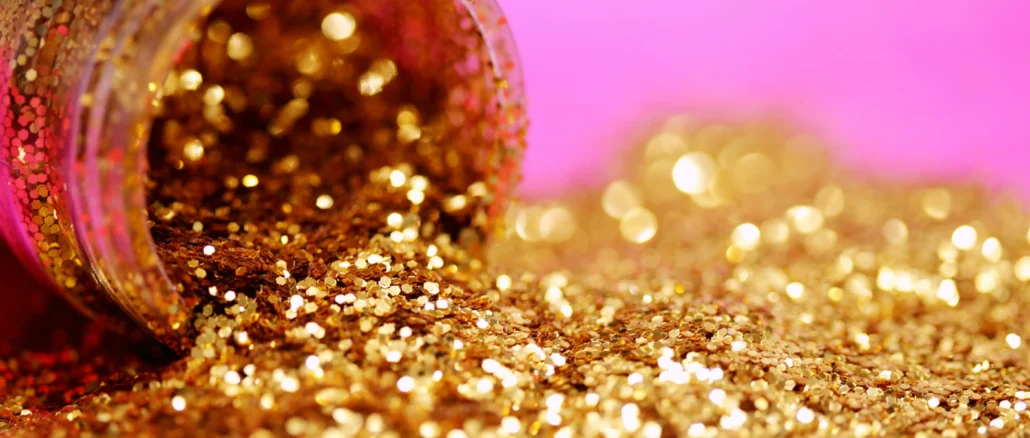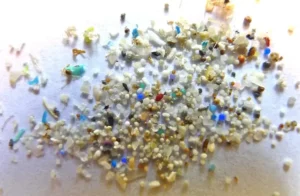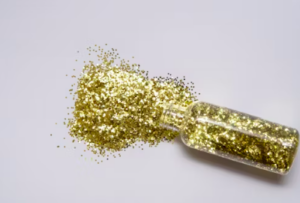
Glitter, once a staple in arts, crafts, and festive decorations, is facing increasing scrutiny due to its environmental impact. Recently, there has been a growing movement to ban glitter in various products and industries, driven by concerns about its contribution to pollution and harm to ecosystems. Let’s delve into the history of glitter, its environmental effects, and why it is now being banned in many places.
A Brief History of Glitter
Glitter, with its mesmerising shimmer and captivating sparkle, boasts a rich history that spans centuries. Its origins can be traced back to ancient Egypt, where skilled artisans ingeniously crafted sparkling pigments for decorative purposes. Utilising minerals like malachite, they meticulously crushed them and mixed them with glass to produce the earliest forms of glitter. This ancient artistry laid the foundation for the evolution of glitter into the modern era.
As time progressed, the manufacturing process of glitter underwent significant transformations. Modern glitter emerged in the early 20th century, showcasing enhanced brilliance and versatility. Unlike its ancient predecessors, contemporary glitter is predominantly composed of plastic sheets and aluminium, fused with polyethylene terephthalate (PET). This amalgamation yields the iconic shiny and iridescent appearance that has become synonymous with glitter, adorning a myriad of products ranging from cosmetics and clothing to greeting cards and beyond.
The Environmental Impact

Despite its widespread use and popularity, glitter presents significant environmental challenges. One of the primary concerns revolves around its composition. Typically crafted from non-biodegradable materials such as plastic, glitter poses a serious threat once it enters the environment. Due to its durability, glitter particles can persist for extended periods, resisting decomposition for years, or even centuries. When inadvertently washed down drains or discarded outdoors, glitter often finds its way into water systems and oceans. Here, it poses a hazard to marine life, as creatures may ingest the glitter particles, leading to potential harm and bioaccumulation within the food chain. Moreover, microplastics from glitter can infiltrate soil, posing risks to terrestrial ecosystems and organisms.
The production process of glitter entails the consumption of resources and energy, resulting in carbon emissions and other environmental repercussions associated with manufacturing. The extraction and mining of raw materials required for glitter production further exacerbate environmental degradation, impacting land integrity and local communities. These cumulative factors underscore the urgent need for sustainable alternatives and responsible consumption practices to mitigate the adverse effects of glitter on our planet.
The Push for Bans
The increasing recognition of glitter’s environmental impact has spurred efforts to restrict its use across different sectors. Several countries and regions have already taken steps to regulate glitter, particularly in cosmetics and personal care products, where its microplastic composition poses a risk to ecosystems. Environmental organisations and advocacy groups are advocating for more comprehensive bans on glitter across various consumer goods, including arts and crafts supplies and festival decorations. These initiatives reflect a growing awareness of the need to address the environmental consequences of glitter and the importance of adopting sustainable alternatives to protect the planet’s ecosystems.
Looking Ahead
 With the increasing awareness of glitter’s environmental footprint, both individuals and businesses are actively seeking out more eco-friendly alternatives. Biodegradable glitter, crafted from plant-based materials such as cellulose or mica, is emerging as a popular choice for those looking to reduce their environmental impact. This sustainable alternative offers the same shimmer and sparkle as traditional glitter but breaks down naturally over time, minimising harm to the environment.
With the increasing awareness of glitter’s environmental footprint, both individuals and businesses are actively seeking out more eco-friendly alternatives. Biodegradable glitter, crafted from plant-based materials such as cellulose or mica, is emerging as a popular choice for those looking to reduce their environmental impact. This sustainable alternative offers the same shimmer and sparkle as traditional glitter but breaks down naturally over time, minimising harm to the environment.
Innovative solutions are being explored to address the issue of glitter pollution. Some companies are experimenting with edible glitter made from natural ingredients, providing a safe and sustainable option for food products and beverages. By embracing these alternatives, consumers and industries can play a role in mitigating the environmental impact of glitter while still enjoying its vibrant and dazzling effects.
While glitter may add sparkle and shine to our lives, its environmental cost is becoming increasingly apparent. By raising awareness of the issues associated with glitter and advocating for bans and alternatives, we can work towards reducing its environmental impact and preserving the health of our planet for future generations.
SheSociety is a site for the women of Australia to share our stories, our experiences, shared learnings and opportunities to connect.

Leave a Reply